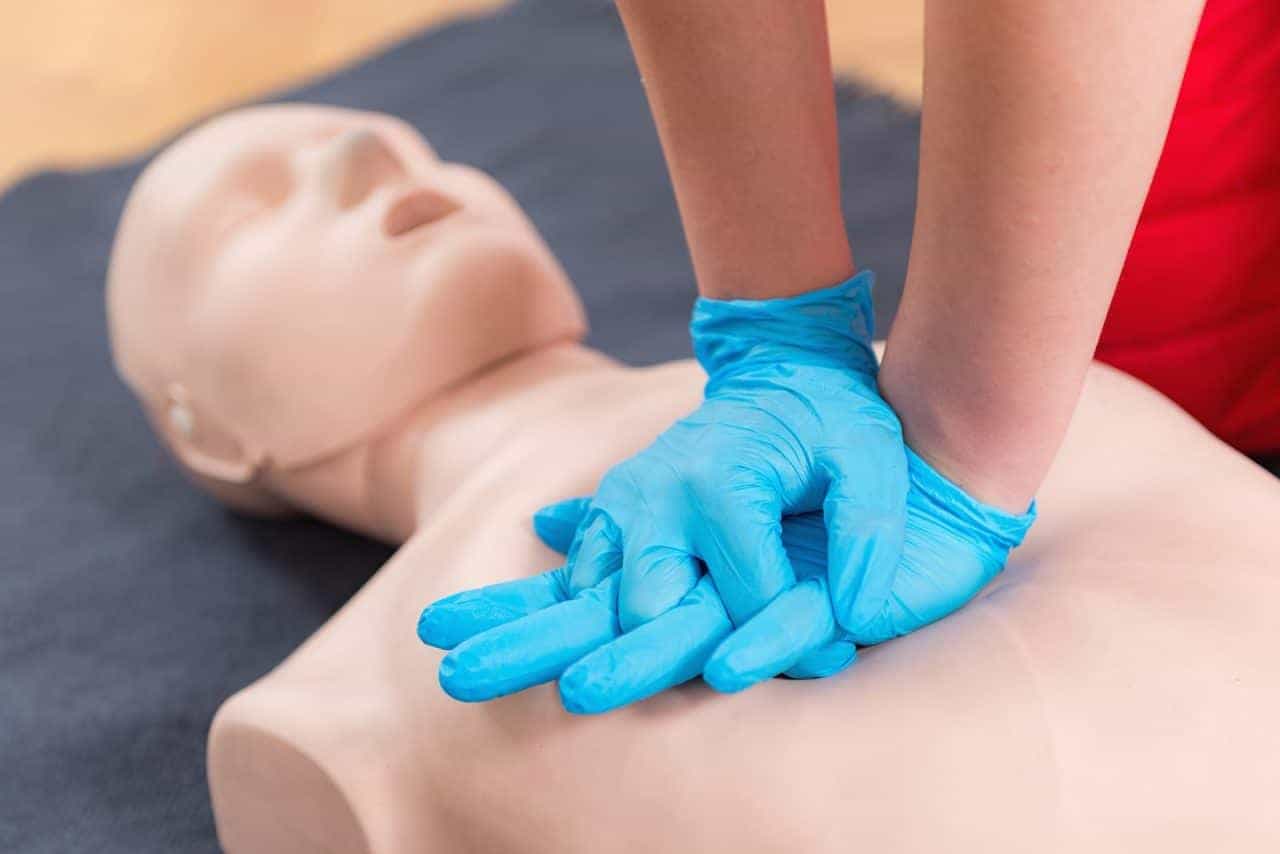Winter is a season of beauty and challenges, with frosty mornings and beautiful landscapes. The cold is like a tough opponent; it’s not just about wearing warm clothes, but also about being strong against the freezing winds. Going to work or anywhere can be tough because the roads are icy, and driving becomes a test of patience and skill. In winter, it’s not just about staying warm outside, but also about dealing with health issues and managing in a world that looks different with all the snow.
Whether you’re an adventurous winter enthusiast or just dealing with the cold in your daily routine, here are some first aid skills you must know in the winter to ensure safety.
Winter & Health Challenges
1. Environmental Illnesses
Whether you love winter adventures or just deal with the day-to-day difficulties of living in colder regions, possessing fundamental first aid skills is crucial. Let’s delve into key first aid abilities that are essential for ensuring safety and providing assistance during environmental illnesses in winter:
Identifying and Addressing the Threat of Hypothermia
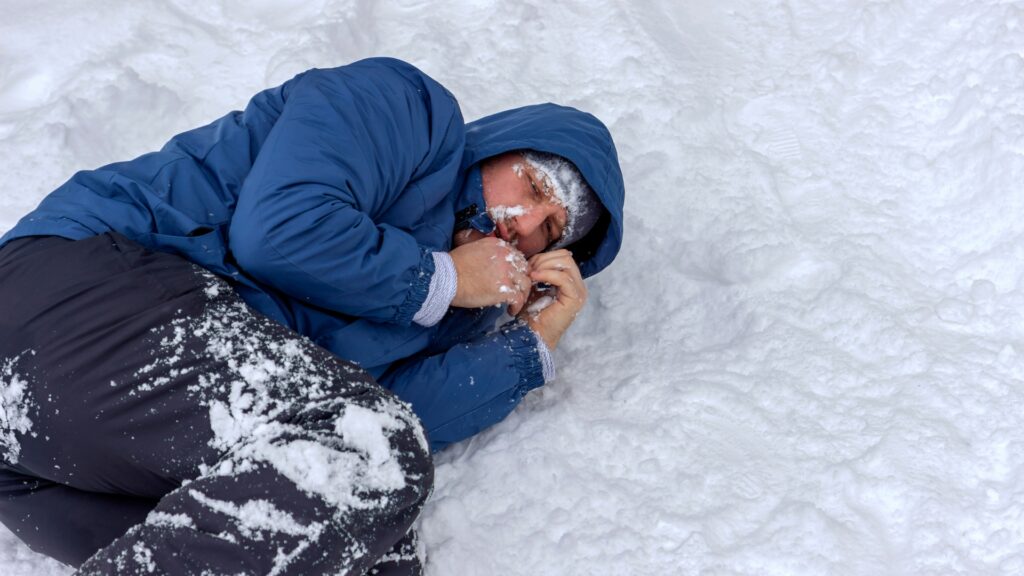
According to the comprehensive guide from the Red Cross, Hypothermia happens when the body’s core temperature, involving the heart, lungs, and brain, falls to 35°C (95°F) or lower. It becomes life-threatening if it drops below 28°C (82.4°F). Those with smaller body sizes, lower weights, and less body fat are more prone to experiencing hypothermia, which can occur in any season, with young children and the elderly at a higher risk.
Hypothermia may be caused by:
- Exerting oneself in cold weather and sweating
- Exposure to cold, wet, and windy conditions
- Immersion in cold water, particularly below 10°C (50°F)
- Dehydration
- Medications that increase water elimination from the body.
What to Observe: Levels of Cold Stress
Cold Stress (Not Hypothermic)
- Shivering
- Normal mental state
- Capable of self-care
Mild Hypothermia
- Intense shivering, expressing discomfort from the cold
- Reduced physical capability
- Challenges in self-care
Moderate Hypothermia
- Weak and sporadic shivering or shivering ceases
- Occasional expression of discomfort from the cold
- Lack of coordination or speech; confused or abnormal behaviour
- Impaired judgment
- Possible unresponsiveness
Severe Hypothermia
- Shivering has halted
- Unresponsiveness, slowed or halted breathing
- Stiffness in the body
- Absence of a pulse
How to offer assistance to a patient experiencing Hypothermia
- When tending to someone experiencing hypothermia, treat them with utmost care and ensure they remain in a horizontal position.
- If removing wet clothing is required, do so in a sheltered area away from the cold environment.
- Shield the individual by using insulation, like a hypothermia wrap, to prevent further exposure to the cold.
- Raise the person’s body temperature by applying warm water bottles, heating pads, or electric blankets to their upper torso, including the armpits, chest, and upper back. In emergencies, body heat from yourself or a bystander can also be effective. Avoid attempting to warm the person with a hot bath, shower, fire, stove, or hot rocks.
- If the person is responsive, offer warm, sugary, non-alcoholic liquids to drink.
Recognizing and Dealing with Cold-Related Skin Issues of Frostbite
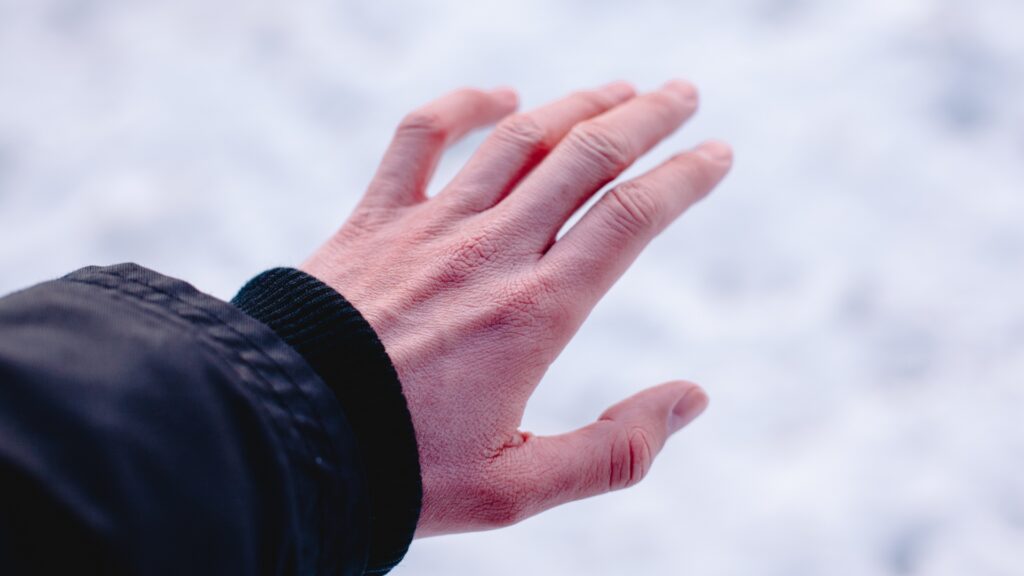
Frostbite is a localized and superficial injury caused by the freezing of the skin, and in severe cases, the tissues beneath. Extremities like toes, feet, fingers, hands, ears, and nose are particularly susceptible to frostbite.
There are two stages of frostbite: Superficial frostbite occurs when the skin freezes without affecting the underlying tissues, potentially causing clear blisters upon thawing, with minimal tissue loss. Deep frostbite, on the other hand, affects tissues beneath the skin, including tendons, muscles, and blood vessels. Ice crystals and swelling inside the body can harm or destroy cells, blood vessels, and nerves. Deep frostbite may result in dark, hemorrhagic blisters during the thawing process and is more likely to lead to tissue loss.
Frostbite may be caused by:
- Dampness on the skin
- Wind exposure
- Inadequate insulation
- Attire or gear that diminishes or restricts blood circulation
What to Observe:
Superficial Frostbite
Manifestations and indicators of superficial frostbite comprise:
- Firm skin
- Skin appearing paler than its surroundings
- Pain or a stinging sensation in the region, succeeded by numbness
Deep Frostbite
Manifestations and indicators of deep frostbite comprise:
- Skin with a waxy texture colder than its surroundings
- Skin and underlying tissue that feels rigid and solid
- Skin displaying white, blue, black, or mottled discoloration
- Complete absence of sensation
How to offer assistance to a patient suffering from frostbite:
- Never disregard numbness: If an extremity feels numb or tingling, it’s crucial to promptly warm it (e.g., placing hands under armpits or pulling arms inside a jacket for direct skin-to-skin contact).
- Safeguard vulnerable areas like cheeks, nose, and ears by wearing weather-appropriate clothing (e.g., scarf, hat, mittens).
- Opt for mittens over gloves when feasible for improved insulation.
- Enhance foot insulation while avoiding a snug fit around the toes.
- Dress in layered clothing and adjust as needed to maintain warmth without causing overheating or excessive sweating.
- Ensure proper hydration.
- Keep clothing dry and change out of wet garments at the earliest opportunity.
2. Chill Induced Physical Ailments
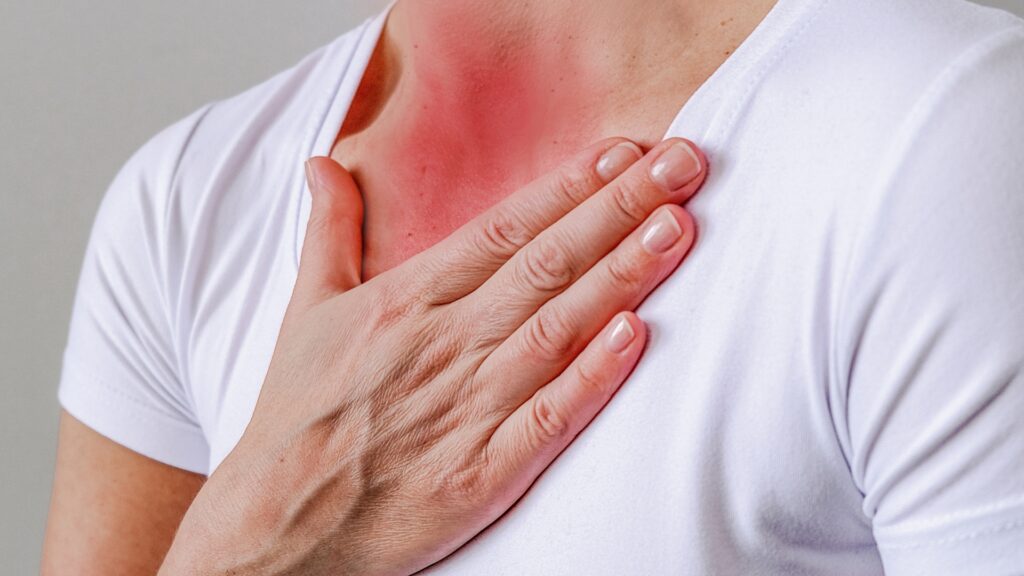
As winter blankets the environment in a chill, it brings not just picturesque snowfall but also a set of physical challenges that can impact our well-being. Let’s delve into the nuances of these chill-induced physical ailments:
Joint Discomfort
Winter often exacerbates joint pain for some individuals. The culprits may include atmospheric pressure changes, decreased physical activity due to colder weather, or the direct impact of cold temperatures on joint tissues. Understanding these factors can help manage and alleviate winter-related joint discomfort.
Elevated Heart Risks
The cold weather can induce blood vessel constriction, potentially leading to increased blood pressure. This poses a concern, particularly for individuals with pre-existing heart conditions. Being aware of these risks and taking proactive measures to keep the cardiovascular system in check becomes crucial during the winter months.
Norovirus Incidents
The winter season witnesses a notable uptick in norovirus infections, bringing symptoms like stomach cramps, nausea, vomiting, and diarrhea. Exploring preventive measures such as proper hygiene, regular handwashing, and avoiding crowded spaces can go a long way in steering clear of norovirus incidents.
Respiratory Challenges
Chilly air can be harsh on the respiratory system, leading to issues like bronchitis and intensified symptoms for individuals with asthma. Understanding how the cold impacts respiratory health allows for proactive steps such as using scarves to warm the air before breathing and maintaining indoor air quality.
Dry Skin Concerns
Indoor heating systems combined with cold outdoor air create an environment conducive to skin dryness. The result can be itching, flakiness, and irritation. Implementing a winter skincare routine, including proper moisturization and hydration, becomes essential in combating these dry skin concerns.
While navigating the winter months, understanding the intricacies of these chill-induced physical ailments empowers us to take proactive steps toward our well-being. Whether adjusting lifestyle habits, adopting preventive measures, or prioritizing self-care, a holistic approach ensures a healthier and more comfortable winter experience.
Be Prepared for Winter Emergencies!
3. Snowy Season Wellness Hurdles
Seasonal Affective Disorder (SAD)

As winter blankets the world in a frosty embrace, some individuals grapple with more than just the chill in the air. Seasonal Affective Disorder (SAD) emerges as a distinct type of depression that typically makes its presence known during the winter months. The primary catalyst? A scarcity of sunlight.
Imagine the sun’s warmth on your face on a summer day, its golden rays lifting a natural mood. Now, envision those sunny days dwindling, replaced by prolonged darkness and overcast skies. This transition can significantly impact the mental well-being of certain individuals susceptible to SAD.
During winter, reduced exposure to sunlight can disrupt the body’s internal clock (circadian rhythm) and affect the production of key neurotransmitters like serotonin and melatonin. Serotonin, known as the “feel-good” neurotransmitter, plays a crucial role in mood regulation. Meanwhile, melatonin, responsible for regulating sleep patterns, sees an increase with reduced sunlight, potentially contributing to feelings of lethargy and drowsiness.
Acknowledging the impact of sunlight on our mental well-being is the first step in addressing SAD. Interventions may include light therapy (exposure to a bright light that mimics natural sunlight), counselling, and lifestyle adjustments. Incorporating mindful practices, ensuring exposure to natural light, and maintaining a consistent sleep schedule can be instrumental in managing SAD.
Slips and Falls Dangers
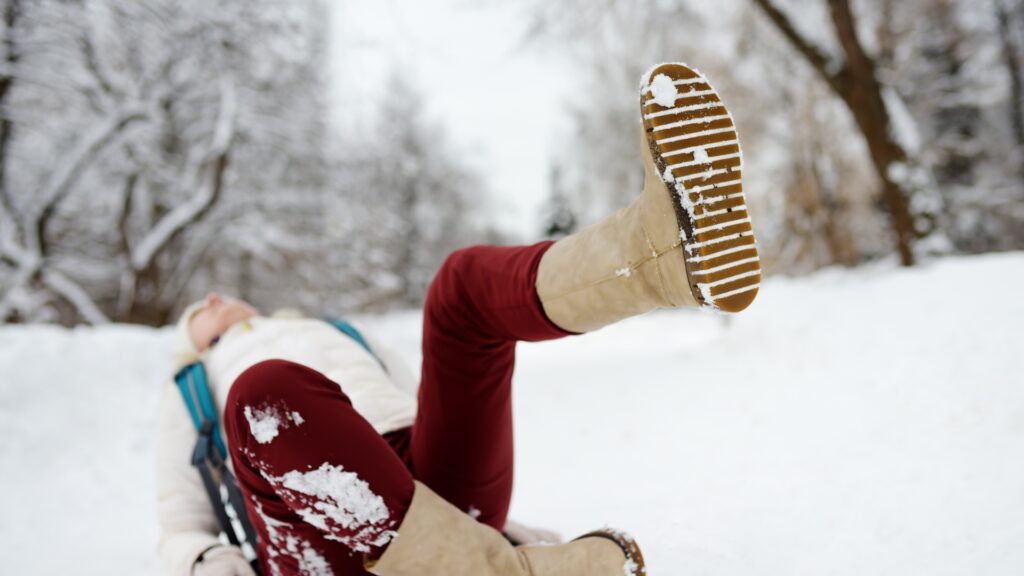
Winter makes everything look pretty, like a magical scene with snow and ice. But, there’s a danger hidden underneath – slipping and falling. It’s important to understand these dangers to stay safe during winter.
The combination of freezing temperatures and precipitation can create icy patches on sidewalks, driveways, and roadways. When unsuspecting individuals encounter these icy surfaces, the risk of slips and falls significantly increases. The danger lies in the immediate impact and the potential for injuries that can have lasting effects.
A slip on ice can lead to a sudden loss of balance, resulting in falls that may cause injuries such as sprains, strains, fractures, or, in severe cases, head injuries. It’s not just the elderly who are vulnerable; people of all ages can be affected. The slippery surfaces demand a heightened sense of awareness and precaution.
To mitigate the risks of slips and falls during winter, it’s essential to adopt proactive measures. This includes wearing appropriate footwear with good traction, taking shorter steps to maintain balance, and avoiding sudden movements. Clearing snow and applying ice melt on walkways can also create safer pathways.
By shedding light on the dangers of slips and falls during winter, we aim to empower individuals with the knowledge needed to navigate the season safely. Whether it’s a leisurely stroll or a hurried commute, being mindful of these winter hazards allows us to enjoy the beauty of winter while prioritizing our well-being.
Why Trust Coast2Coast This Winter
- Winter-Focused Expertise – Coast2Coast’s instructors are well-versed in winter’s specific challenges. Benefit from their expertise in addressing cold-related injuries, slips, falls, and other winter-specific first aid needs.
- Real-Life Application – Our courses are designed to go beyond theoretical knowledge. Coast2Coast ensures you’re equipped with practical, hands-on skills that directly apply to the unique situations you may encounter during winter.
- Immediate Accessibility – Winter waits for no one, and neither should your preparedness. Coast2Coast offers convenient access to training, allowing you to learn at your pace and be ready to face winter’s unpredictabilities.
- Tailored for All – Whether you’re an outdoor enthusiast, a parent, or a commuter, Coast2Coast’s winter-focused modules cater to various lifestyles. Gain the confidence to handle winter emergencies effectively, no matter your background or experience level.
In order to equip yourself with essential life-saving skills and ensure you’re prepared to handle emergencies with confidence, we strongly encourage you to register for a First Aid & CPR training course at Coast2Coast First Aid and Aquatics. By taking this proactive step, you not only enhance your own safety awareness but also contribute to building a safer and more resilient community. Don’t wait until an emergency occurs—empower yourself with the knowledge and skills needed to make a difference. Visit Coast2Coast’s website today to sign up for a training course that could make a crucial difference in a time of need. Your commitment to learning these vital skills could be the key to saving a life.








